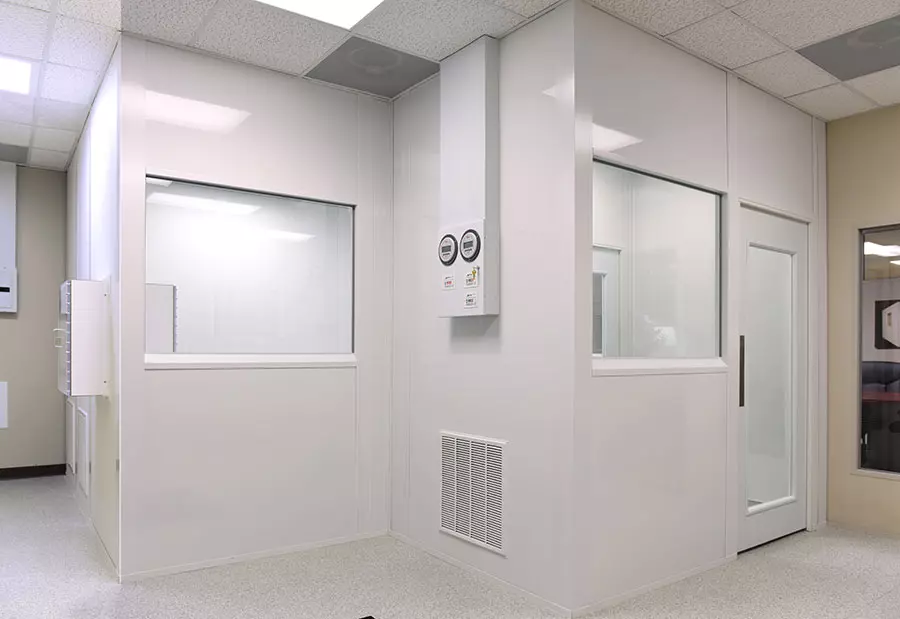


Negative pressure rooms are any room with a lower pressure than the surrounding environment. When people talk about negative pressure rooms, they’re most often talking about negative pressure cleanrooms, which are intended to safely contain whatever is in the room and prevent it from escaping into the surrounding environment. Negative pressure rooms are ideal for any application that might be dealing with hazardous chemicals, biomedical research, or even medical environments where doctors may be working to stop the spread of a potentially contagious virus or disease.
The term “negative pressure” refers to any space where the air pressure inside the environment is lower than the pressure outside. They’re called negative pressure rooms because when a door is opened to the room, outside air is sucked into the room like a vacuum, rather than flowing out. This prevents any air in the room, along with any particles or contaminants that air might contain, from escaping.
Negative pressure rooms are reliant on two key factors:
The greatest benefit of a negative pressure room is its ability to isolate operations or contaminants within the negative pressure room from the rest of the building. While you’ll often hear negative pressure rooms referred to in medical applications, where doctors are working to isolate contagious pathogens from the rest of the hospital, negative pressure rooms are beneficial to a wide range of applications.
Even a standard laboratory can benefit from negative pressure airflow. When labs are built with negative pressure in mind, laboratory managers can ensure that any hazardous fumes caused by chemicals used in a laboratory setting are pumped safely outside, through the laboratory’s exhaust, rather than into the rest of the building.
Negative pressure rooms help to ensure the safe air quality of the rest of the building. By constructing an airtight, negative pressure room in your facility or laboratory, you can ensure that any hazardous chemicals or potentially dangerous particulate is safely directed away from occupants in the rest of the building, helping create improved air quality for the rest of the building.
Interested in a negative pressure room for your application? Starrco modular negative pressure rooms are custom-configured to meet your unique specifications. No matter your application or your location, we can design, construct, and deliver exactly the negative pressure room you need, on your schedule. Contact a Starrco negative pressure room expert today.